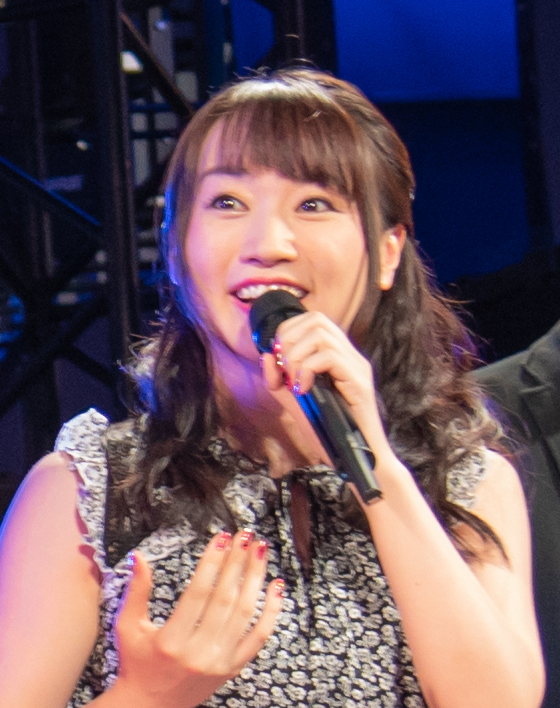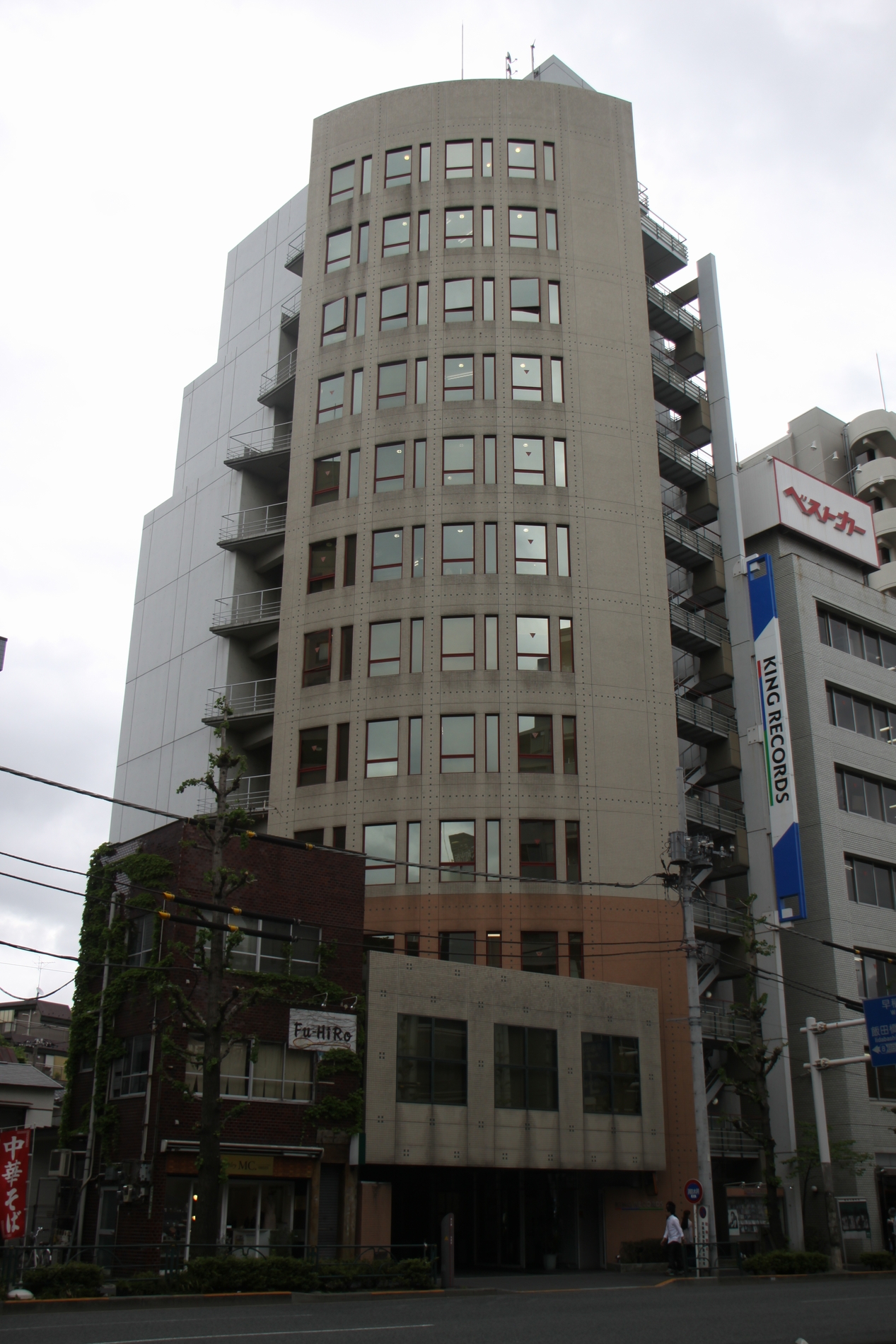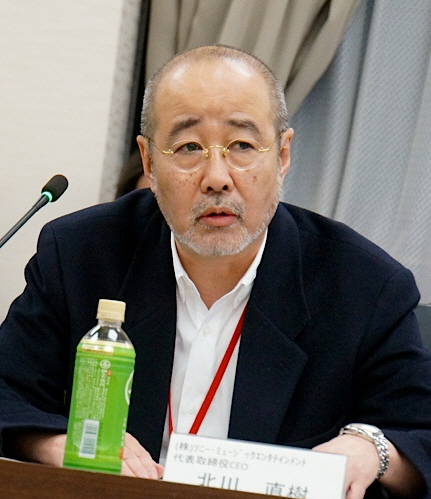|
BPM 150 Max
''BPM 150 Max'' is the third studio album by J-pop duo Two-Mix, released by King Records on November 21, 1996. It includes the singles "Love Revolution" (theme from the TV Asahi drama '' Kirara'') and "Rhythm Generation" (opening theme from the TV Tokyo anime series ''Godzilla Kingdom''). The album peaked at No. 2 on Oricon's weekly albums chart, becoming the duo's highest-charting album. It was also certified Gold by the RIAJ. Track listing All lyrics are written by Shiina Nagano; all music is composed by Minami Takayama is a Japanese voice actress, narrator and singer who is currently affiliated with 81 Produce. She is also the main vocalist of Two-Mix and ES CONNEXION when it was active. Her uncle is a former New Japan Pro-Wrestling managing director Hisashi Sh ...; all music is arranged by Two-Mix. Charts Certification References External links * * {{DEFAULTSORT:BPM 150 Max 1996 albums Two-Mix albums Japanese-language albums King Records (Japan ... [...More Info...] [...Related Items...] OR: [Wikipedia] [Google] [Baidu] |
Two-Mix
Two-Mix (temporarily known as II MIX⊿DELTA) is a Japanese pop duo formed in 1995 by Minami Takayama (vocals and composer) and Shiina Nagano (synthesizer, composer and lyricist). Their style is fast electronic pop. History They met in the early 1990s. Minami, already well-established as a voice actress, was in the indie band Re-X and met Shiina through a friend. Minami released a solo album in 1992, ''Endless Communication'' which Shiina contributed to. They formed a group together Es Connexion and released an album. In 1995 they formed Two-Mix. They have been featured in anime such as ''Gundam Wing'' and ''Detective Conan'' (in which the title character, Conan Edogawa, is voiced by Minami.) They also made a guest appearance in one of the episode in which they were kidnapped and saved by Conan and his friends). In 1999, Two-Mix produced Miru Takayama (a cousin of Minami) and in 2000 Miru and Minami formed M*TWO-MinaMiru-. In 2005, Minami and Shiina were joined by Joe Rinoie a ... [...More Info...] [...Related Items...] OR: [Wikipedia] [Google] [Baidu] |
J-pop
J-pop ( ja, ジェイポップ, ''jeipoppu''; often stylized as J-POP; an abbreviated form of "Japanese popular music"), natively also known simply as , is the name for a form of popular music that entered the musical mainstream of Japan in the 1990s. Modern J-pop has its roots in traditional music of Japan, and significantly in 1960s pop and rock music. J-pop replaced ''kayōkyoku'' ("Lyric Singing Music", a term for Japanese popular music from the 1920s to the 1980s) in the Japanese music scene. J-rock bands such as Happy End fused the Beatles and Beach Boys-style rock with Japanese music in the 1960s1970s. J-country had popularity during the international popularity of Westerns in the 1960s1970s as well, and it still has appeal due to the work of musicians like Charlie Nagatani and venues including Little Texas, Tokyo. J-rap became mainstream with producer Nujabes and his work on ''Samurai Champloo'', Japanese pop culture is often seen with anime in hip hop. Other trends ... [...More Info...] [...Related Items...] OR: [Wikipedia] [Google] [Baidu] |
Electropop
Electropop is a hybrid music genre combining elements of electronic and pop genres. Writer Hollin Jones has described it as a variant of synth-pop with heavy emphasis on its electronic sound. The genre was developed in the 1980s and saw a revival of popularity and influence in the late 2000s. History Early 1980s During the early 1980s, British artists such as Gary Numan, the Human League, Soft Cell, John Foxx and Visage helped pioneer a new synth-pop style that drew more heavily from electronic music and emphasized primary usage of synthesizers. 21st century Britney Spears' influential fifth studio album '' Blackout'' (2007) incorporated elements of the genre, catapulting electropop to mainstream significance. The media in 2009 ran articles proclaiming a new era of different electropop stars, and indeed the times saw a rise in popularity of several electropop artists. In the Sound of 2009 poll of 130 music experts conducted for the BBC, ten of the top fifteen artist ... [...More Info...] [...Related Items...] OR: [Wikipedia] [Google] [Baidu] |
Anison
, also shortened to , is a genre of music originating from Japanese pop music. Anime songs consist of theme, insert, and image songs for anime, video game, and audio drama CD series, as well as any other song released primarily for the anime market, including music from Japanese voice actors. The anime song genre was first defined as a musical category in the 1970s. It later gained popularity from the public when mainstream artists begin releasing songs as tie-ins for anime series. By the 1990s, it became redefined as a separate genre when companies began creating record labels that would exclusively produce anime songs for their series and artists. The increase in voice actors beginning in the mid 2000s led to growing market interest in the genre. History 1930-1970: Early influences ''The Dull Sword'' (1917), by Jun'ichi Kōuchi, is regarded as the earliest surviving animated film in Japan. Noburo Ofuji's ''Kuroi Nyago'' (1929) is the first Japanese animated work to include ... [...More Info...] [...Related Items...] OR: [Wikipedia] [Google] [Baidu] |
King Records (Japan)
, commonly known as King Records, is a Japanese record company founded in January 1931 as a division of the Japanese publisher Kodansha. It initially began operating as an independent entity in the 1950s. It later became part of the Otowa Group. Today, King Records is one of Japan's largest record companies which is not owned by a multinational entity. The label's headquarters are in Bunkyo, Tokyo. The label's name is actually based from the now-defunct ''Kingu'' magazine published by Kodansha from 1924 to 1957. Sub-labels Its Starchild label, was managed by animation producer Toshimichi Ōtsuki, specialised in anime music and film. King Records also distributes the Up-Front Works–owned and –operated labels Piccolo Town and Rice Music, and also released video games for the PC-88, Famicom, and MSX2 computers. On February 1, 2016, King Records restructured Starchild and renamed it King Amusement Creative. Paddle Wheel Records is a division of King Record Co. You! Be Cool i ... [...More Info...] [...Related Items...] OR: [Wikipedia] [Google] [Baidu] |
Two-(Re)Mix
''Two-(Re)Mix'' (stylized as ''TWO→(RE)MIX'') is the first remix album by J-pop duo Two-Mix, released by King Records on March 23, 1996. It features remixes of the ''Mobile Suit Gundam Wing'' opening themes " Just Communication" and "Rhythm Emotion". The album peaked at No. 15 on Oricon , established in 1999, is the holding company at the head of a Japanese corporate group that supplies statistics and information on music and the music industry in Japan and Western music. It started as, which was founded by Sōkō Koike in Nov ...'s weekly albums chart. Track listing All lyrics are written by Shiina Nagano; all music is arranged by Two-Mix. Charts References External links * * {{DEFAULTSORT:Two-(Re)Mix 1996 remix albums Two-Mix albums Japanese-language compilation albums King Records (Japan) compilation albums ... [...More Info...] [...Related Items...] OR: [Wikipedia] [Google] [Baidu] |
BPM "Best Files"
''BPM "Best Files"'' is the first compilation album by J-pop duo Two-Mix, released by King Records on March 13, 1997. The album covers the duo's singles, B-sides, and other tracks from 1995 to 1996. It also includes a bonus CD-ROM that features the music video for the single "White Reflection". The album peaked at No. 6 on Oricon's weekly albums chart. It was also certified Gold by the RIAJ. Track listing All lyrics are written by Shiina Nagano; all music is composed by Minami Takayama is a Japanese voice actress, narrator and singer who is currently affiliated with 81 Produce. She is also the main vocalist of Two-Mix and ES CONNEXION when it was active. Her uncle is a former New Japan Pro-Wrestling managing director Hisashi Sh ..., except where indicated; all music is arranged by Two-Mix. Charts Certification References External links * * {{DEFAULTSORT:BPM Best Files 1997 compilation albums Two-Mix compilation albums Japanese-language compilation a ... [...More Info...] [...Related Items...] OR: [Wikipedia] [Google] [Baidu] |
TV Asahi
JOEX-DTV (channel 5), branded as (also known as EX and and stylized as TV asahi), is a television station that is owned and operated by the subsidiary of certified broadcasting holding company , itself controlled by The Asahi Shimbun Company. The station serves as the flagship of the All-Nippon News Network and its studios are located in Roppongi, Minato, Tokyo. Headquarters In 2003, the company headquarters moved to a new building designed by Fumihiko Maki currently located at 6-9-1 Roppongi, Minato, Tokyo, Japan. File:朝日電視台 (16202552212).jpg, Atrium of TV Asahi's HQ in Roppongi File:TV Asahi Ark Broadcasting Center 20200801.jpg, TV Asahi's Broadcasting Center at Ark Hills, not far from its headquarters since 2003 Some of TV Asahi's departments and subsidiaries, such as TV Asahi Productions and Take Systems, are still located at ''TV Asahi Center'', the company's former headquarters from 1986 to 2003. It is located at Ark Hills, not far from its headquarter ... [...More Info...] [...Related Items...] OR: [Wikipedia] [Google] [Baidu] |
Kirara (manga)
''Kirara'' is a manga series by Toshiki Yui first published in 1993 by Shueisha. It was later adapted as an original video animation (OVA) in 2000. It was licensed in French by Panini Comics. Plot Kirara Imai is a young woman who, running late for her wedding, speeds in her car and dies in a car accident. Without understanding why, she finds herself transported eight years into the past, as a ghost. Kirara keeps her appearance, but can move through the air and can pass through walls at will. Kirara finds Kompei, her future fiancé, and the Kirara of that time, who at that point are not a couple yet. The ghost Kirara cannot accept her separation from Kompei and tries to keep him to herself, at the expense of her past self. Reception In the French Dico Manga, Nicolas Finet described ''Kirara'' as a comedy of manners, full of light and uplifting situations, and of misunderstanding and entanglements. He added that its distinct undressed dimension was certainly a part of this ... [...More Info...] [...Related Items...] OR: [Wikipedia] [Google] [Baidu] |
TV Tokyo
JOTX-DTV (channel 7), branded as and known colloquially as , is a television station headquartered in the Sumitomo Fudosan Roppongi Grand Tower in Roppongi, Minato, Tokyo, Japan, owned and operated by the subsidiary of listed certified broadcasting holding company itself a subsidiary of Nikkei, Inc., serving as the flagship station of the TX Network.." TV Tokyo. Retrieved on June 21, 2010. It is one of the major Tokyo television stations, particularly specialising in anime. History TV Tokyo was established by the Japan Science Foundation in 1951 and started broadcasting, as on April 12, 1964. It took its name from its VHF frequency channel 12. It almost went bankrupt in 1968; on 1 July that year, a limited liability company, Tokyo Channel 12 Production was established with the help of the '' Nikkei'' and Mainichi Broadcasting System. In 1969 the ''Nikkei'' and MBS signed a memorandum of understanding which stipulates that Tokyo Channel 12 should share programs with N ... [...More Info...] [...Related Items...] OR: [Wikipedia] [Google] [Baidu] |
Oricon
, established in 1999, is the holding company at the head of a Japanese corporate group that supplies statistics and information on music and the music industry in Japan and Western music. It started as, which was founded by Sōkō Koike in November 1967 and became known for its music charts. Oricon Inc. was originally set up as a subsidiary of Original Confidence and took over the latter's Oricon record charts in April 2002. The charts are compiled from data drawn from some 39,700 retail outlets (as of April 2011) and provide sales rankings of music CDs, DVDs, electronic games, and other entertainment products based on weekly tabulations. Results are announced every Tuesday and published in ''Oricon Style'' by subsidiary Oricon Entertainment Inc. The group also lists panel survey-based popularity ratings for television commercials on its official website. Oricon started publishing Combined Chart, which includes CD sales, digital sales, and streaming together, on December 19, 2 ... [...More Info...] [...Related Items...] OR: [Wikipedia] [Google] [Baidu] |
Recording Industry Association Of Japan
The is an industry trade group composed of Japanese corporations involved in the music industry. It was founded in 1942 as the Japan Phonogram Record Cultural Association, and adopted its current name in 1969. The RIAJ's activities include promotion of music sales, enforcement of copyright law, and research related to the Japanese music industry. It publishes the annual ''RIAJ Year Book'', a statistical summary of each year's music sales, as well as distributing a variety of other data. Headquartered in Minato, Tokyo, the RIAJ has twenty member companies and a smaller number of associate and supporting members; some member companies are the Japanese branches of multinational corporations headquartered elsewhere. The association is responsible for certifying gold and platinum albums and singles in Japan. RIAJ Certification In 1989, the Recording Industry Association of Japan introduced the music recording certification systems. It is awarded based on shipment figures of com ... [...More Info...] [...Related Items...] OR: [Wikipedia] [Google] [Baidu] |





